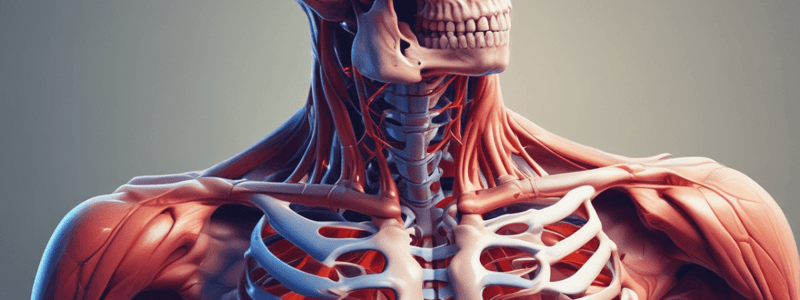Podcast
Questions and Answers
Which component of the locomotory system is responsible for all body movements?
Which component of the locomotory system is responsible for all body movements?
- Muscles (correct)
- Joints
- Periosteum
- Bones
What gives bone its characteristic properties?
What gives bone its characteristic properties?
- Mineral salts (correct)
- Osteocytes
- Endostal cells
- Protein fibres
Which part of the bone is insensitive to nerve fibres?
Which part of the bone is insensitive to nerve fibres?
- Periosteum
- Compact bone (correct)
- Spongy bone
- Bone marrow
What happens to bones if the protein fibres are destroyed?
What happens to bones if the protein fibres are destroyed?
Which component tightly surrounds the bone in the locomotory system?
Which component tightly surrounds the bone in the locomotory system?
Where is the bone marrow situated?
Where is the bone marrow situated?
What is responsible for all body movement in the locomotory system?
What is responsible for all body movement in the locomotory system?
Which component of bone gives it resilience?
Which component of bone gives it resilience?
What happens to bones if the mineral salts are dissolved with acid?
What happens to bones if the mineral salts are dissolved with acid?
What part of the bone is traversed by fine channels known as Haversian canals?
What part of the bone is traversed by fine channels known as Haversian canals?
What is the main function of the periosteum in relation to bone?
What is the main function of the periosteum in relation to bone?
Where are stem cells located that give rise to erythrocytes, leucocytes, and platelets?
Where are stem cells located that give rise to erythrocytes, leucocytes, and platelets?




